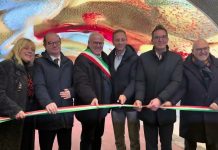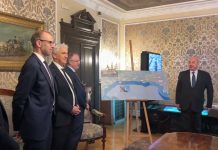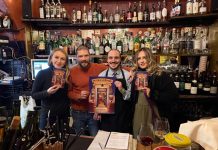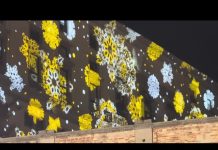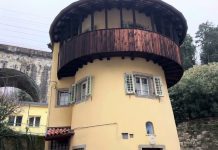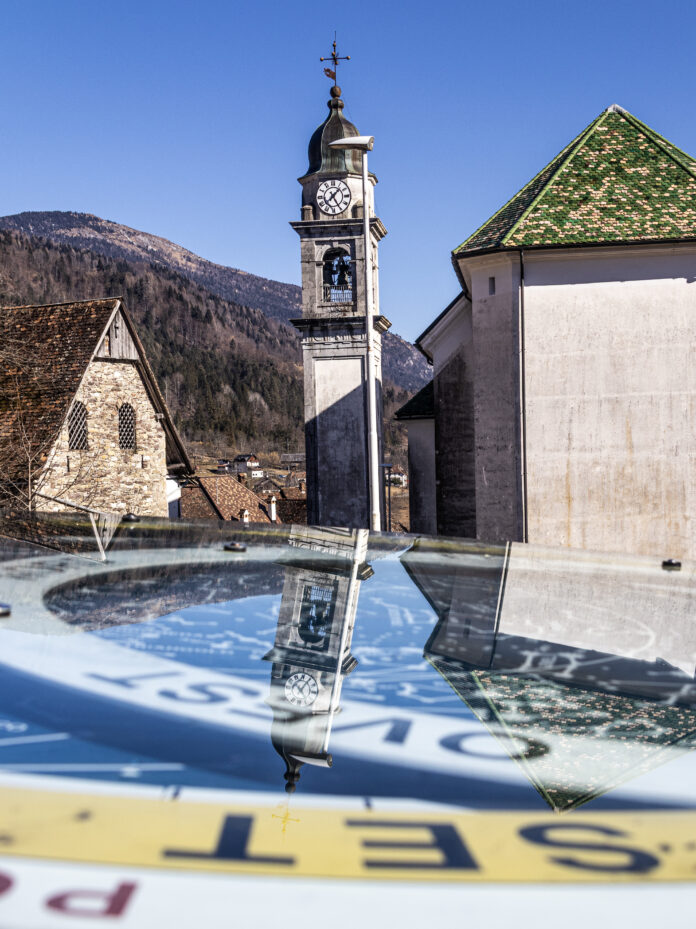words & photography: Victor Caneva
“Meandering through the Village of Clocks in the Valley of Time”: Although resembling a chapter heading in a quirky fantasy novel, this is actually something one can do in stunning Friuli Venezia Giulia. A two-hour drive from Trieste, in the Pesarine Valley (also known as the Valley of Time) lies picturesque and unassuming Pesariis. Boasting less than two hundred inhabitants, innovations from this Carnian hamlet revolutionized how the world tells time.
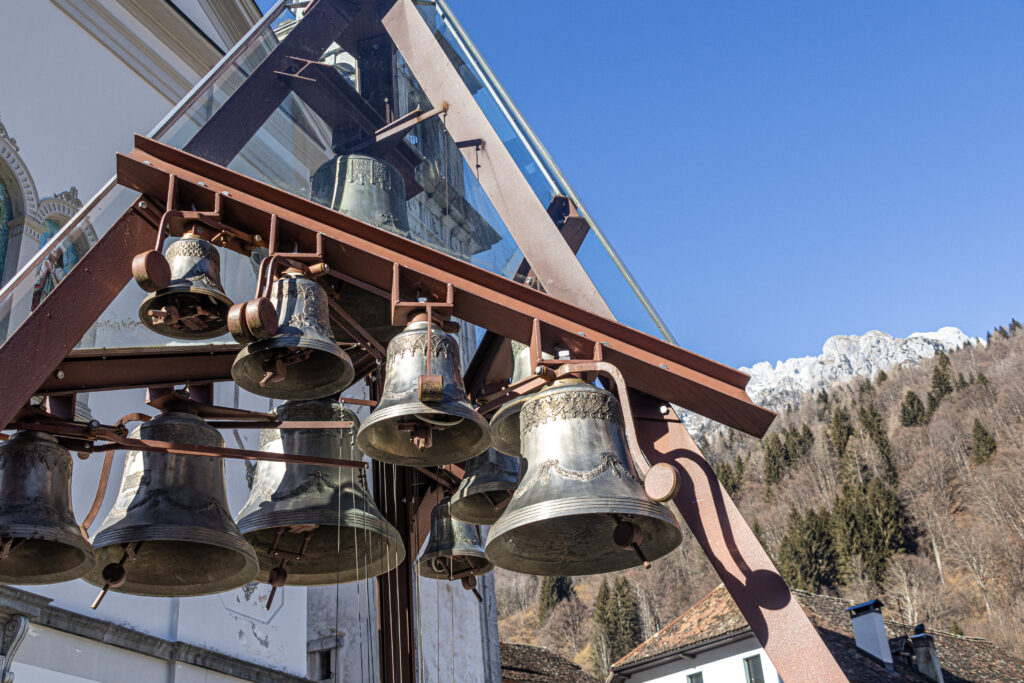
Clockmaking has been an integral part of this “Village of Clocks” for around four hundred years, yet the story of how the industry came to thrive in Pesariis remains nebulous. Dual theories attempt to explain the phenomenon and the truth likely lies in the convergence of the two. The more amusing hypothesis involves the quasi-mythical figure of Solari, purported to be an exiled Genoese pirate from Chiavari who arrived in Pesariis around 1700, teaching the townspeople the art of clockmaking.

An Alternate idea is that cramârs, Carnian merchants who transported Venetian spices and traded them in present-day Austria and Germany, were exposed to the already established clockmaking traditions of Germany and brought important technical knowledge back with them as they returned to Pesariis.
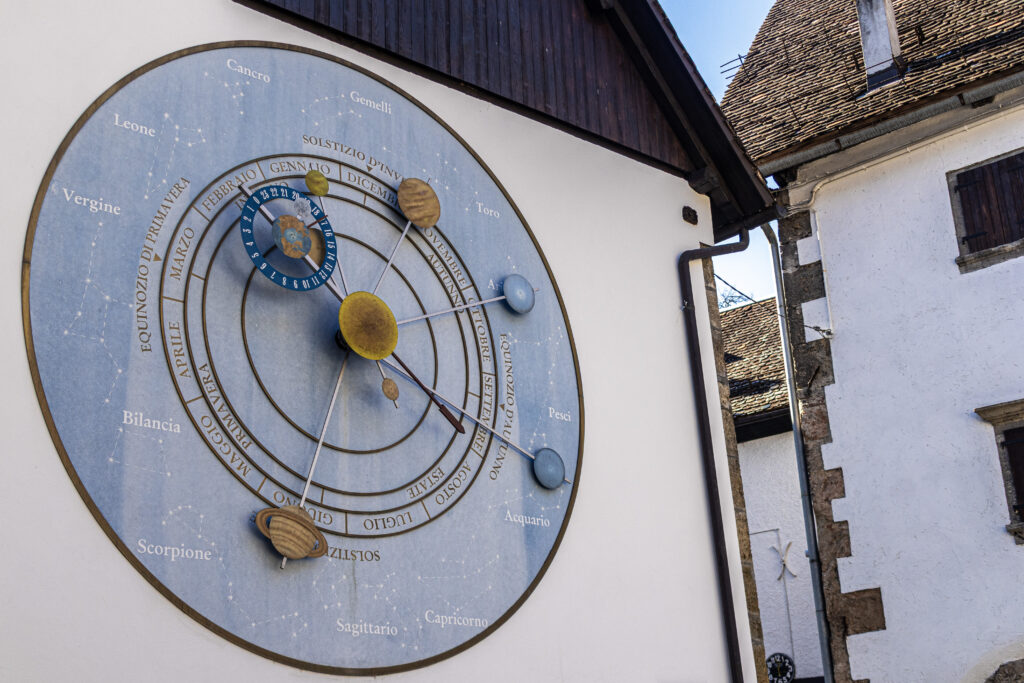
What is certain is that, as far back as the 17th Century, complex iron wall clocks that mechanically resembled contemporaneous clocks from the Black Forest area of Germany were produced in Pesariis, adorning prominent homes in the village.
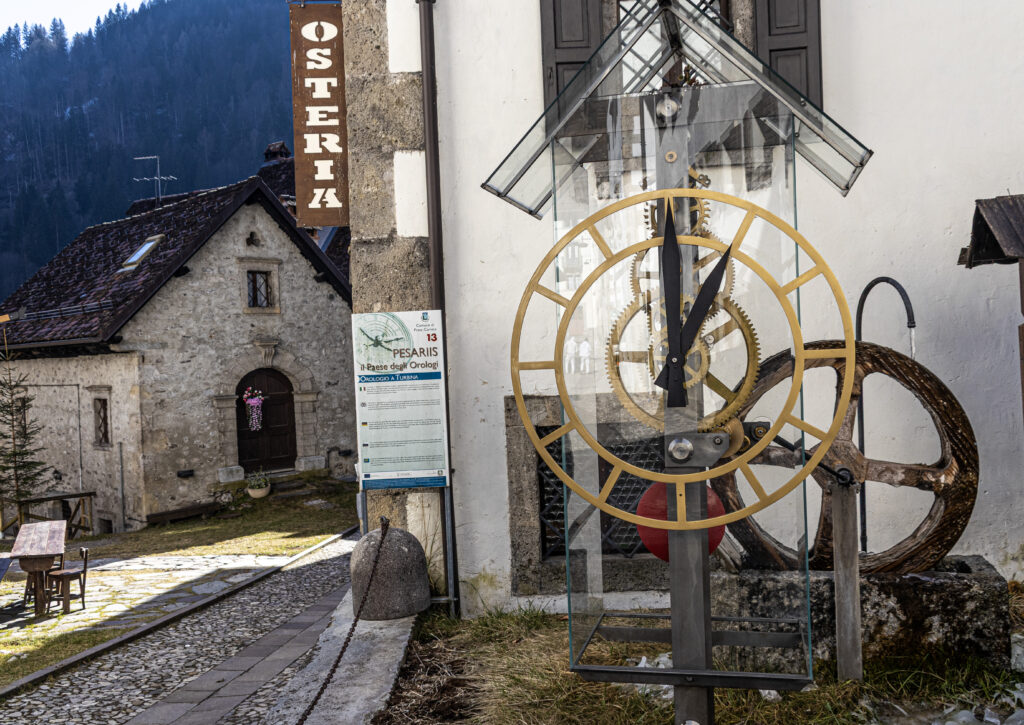
In 1725, The Solari clockmaking company (presently known as Solari di Udine S.p.A) was founded just north of town, where a torrent drove mill blades to power forges used in blacksmithing. The business was renowned for producing large tower clocks, such as one installed in 1789 by Antonio Solari in Cres, in modern day Croatia.

Changing its name to “Fratelli Solari” in the 19th Century, the company grew, adopted modern technical advances, and exported its prized tower clocks as far away as the Americas. During this period, much of the population of Pesariis was engaged in clockmaking itself or in auxiliary industries that produced materials used for the construction or shipping of clocks.
As the 20th Century dawned, much of Solari’s production was focused on flip clocks instead of tower clocks. The company won important contracts with the Italian railway system and produced a particularly massive and sophisticated flip clock that briefly graced the Neapolitan Post Office headquarters before it was destroyed in a bombing during World War II.
Due to differing visions for the company within the owning family, Solari split into two separate entities in 1948, with Fratelli Solari remaining in Pesariis and brothers Remigio and Fermo Solari forming what would later be known as Solari di Udine S.p.A in Udine.
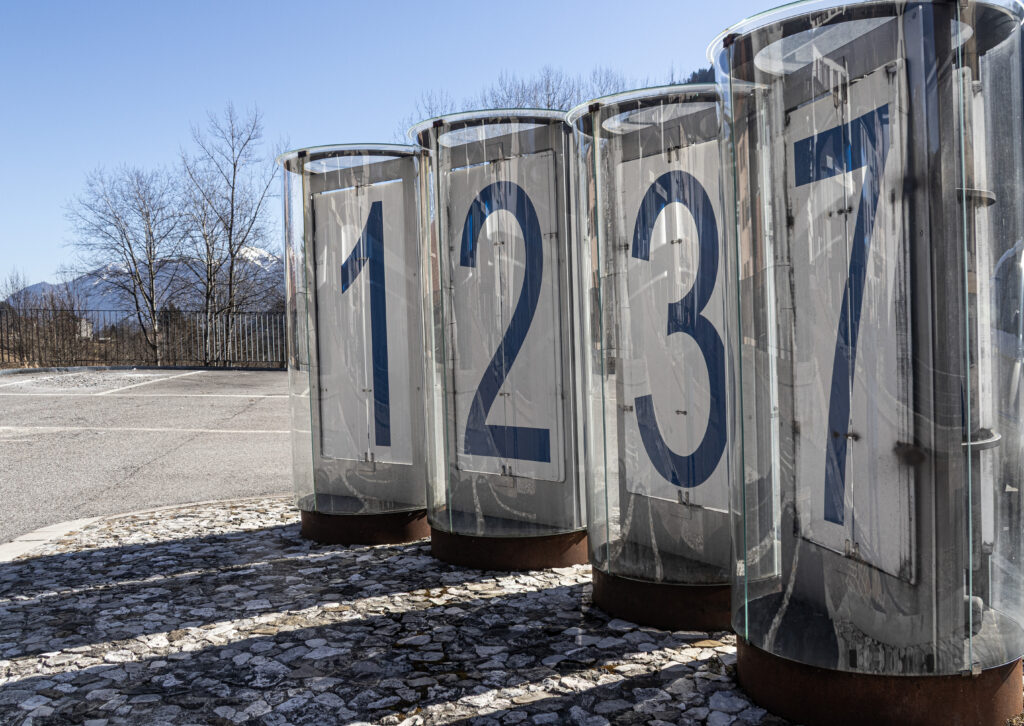
During the war, Remigio, a gifted inventor, devised a new mechanism for operating flip clocks and the company in Pesariis won a major contract with the Italian rail service. Eighty percent of clocks used in Italian train stations in the post-war period were sourced from Fratelli Solari in quaint Pesariis.
Meanwhile, the Udine based company experienced even greater success, twice winning the Compasso d’Oro, an award given to showcase excellence in Italian industrial design, in 1956 and 1962. Both winning innovations were creations of exceptional designer Gino Valle.
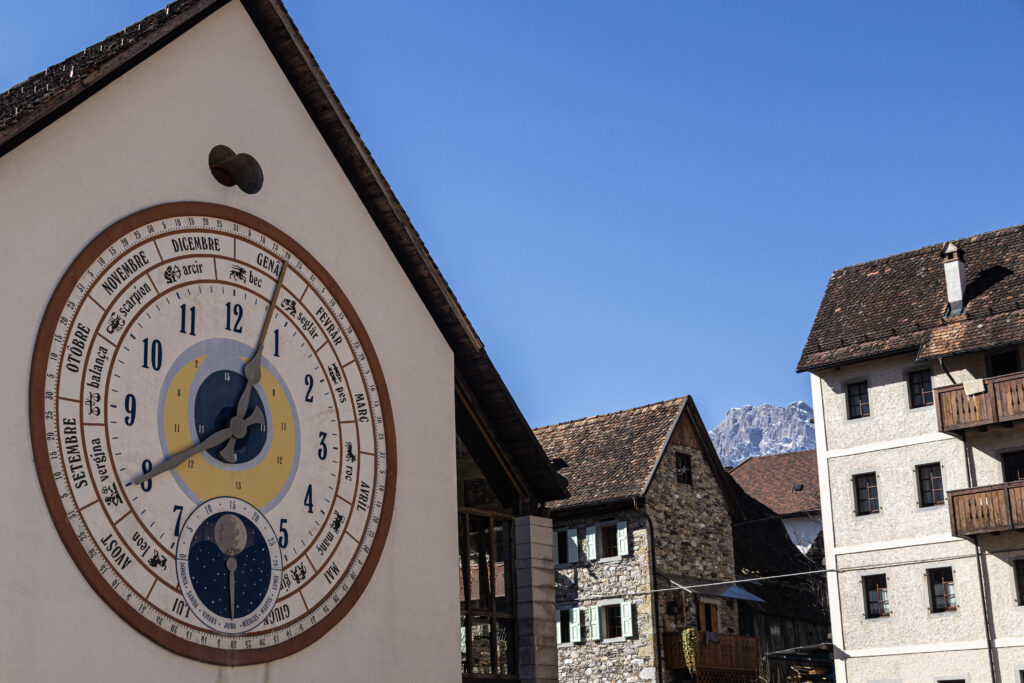
The first design, the Cifra 5 electromechanical flip clock, is sought after by collectors who pay a pretty penny for the engineering marvel. Revolutionary alphanumeric tele-indicators, the 1962 prize-winner, were adopted at the TWA Terminal in JFK Airport in New York City. Products from Solari were ubiquitous in Airports and train stations around the globe.
Fratelli Solari and Solari di Udine finally reunified in 1998 when Solari di Udine acquired the Pesariis based operation. Showing an impressive ability to adapt to technological developments in its three hundred years of existence, Solari remains on the cutting edge of industry, producing state-of-the-art informational displays for Airports and train stations as well as other display solutions.
Today, still nestled beneath the Pesarine Alps, hugging the stream used so long ago to power now-silent forges, Solari di Udine’s logo hangs on the original headquarters of the storied clockmaker turned global company.
Pesariis, understandably, is quite proud of its unique history. At the beginning of the 2000’s, the town administration launched an ingenious project and Pesariis officially became, “The Village of Clocks.” A “route of clocks” was established, providing visitors with an opportunity to learn about the history of timekeeping, from the earliest methods used to more modern ones, as they traverse the charming town’s cobblestone streets.
Fifteen stops exist on the route (with three more outside of town) and represent what must be one of the most fascinating collections of “clocks” in existence. From a clock made from 12 water tanks that fill up every hour, to an analemmatic sundial in which one’s shadow serves as the time indicator, to an ornate music box clock featuring 11 bells, to a massive planetary clock, to a gigantic flip clock ala Fratelli Solari, the percorso dell’orologeria is an immersive journey that is simultaneously educational and fun.
Many of these extraordinary timepieces were built either by Fratelli Solari (such as the music box clock produced in the 1950’s) or by former employees of the company, for whom clockmaking is not simply a profession, but a passion.
For those desiring a deeper acquaintance with timepieces created in Pesariis over the centuries, The town’s Museum of Clockmaking hosts a unique collection of clocks spanning from the 1600’s to Solari’s Twentieth Century flip clocks.
As I set out on a brilliant, decidedly off-season, Thursday in mid-February to walk the route of clocks, I had Pesariis practically to myself. Drenched in sunshine and in a surreal silence, I relished exploring this little Carnian gem, discovering how it improbably marked our world forever.



